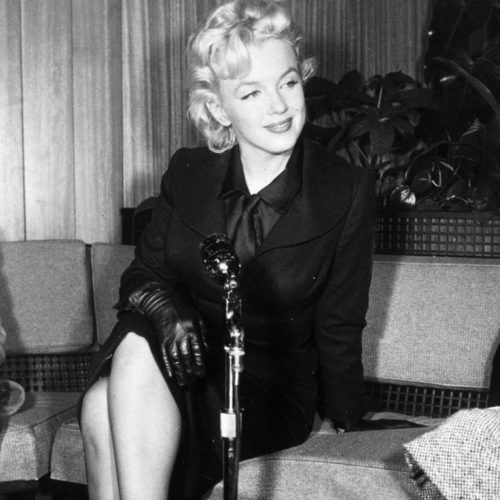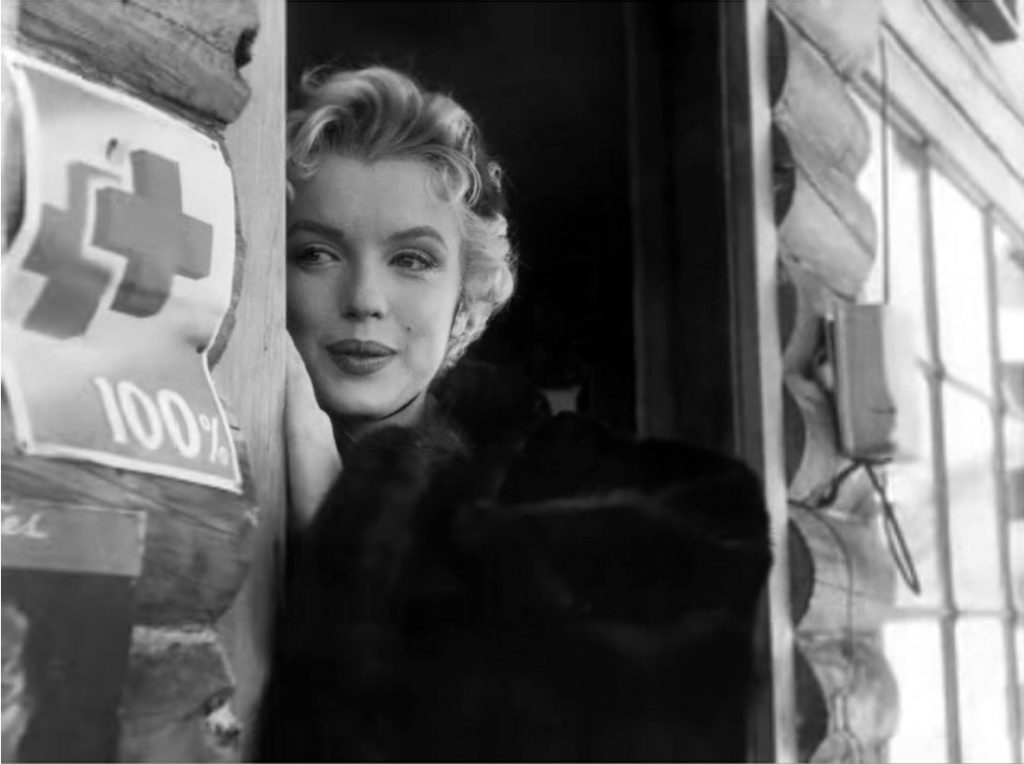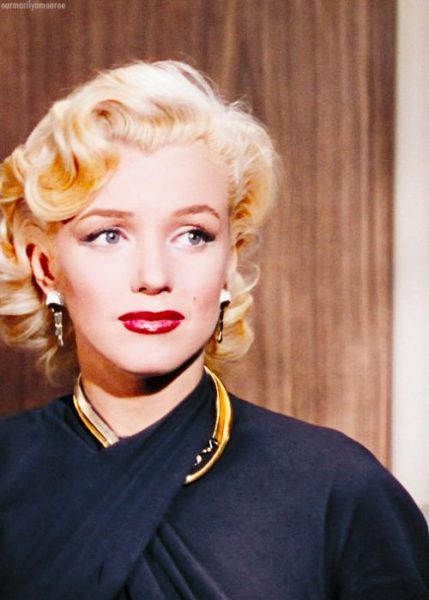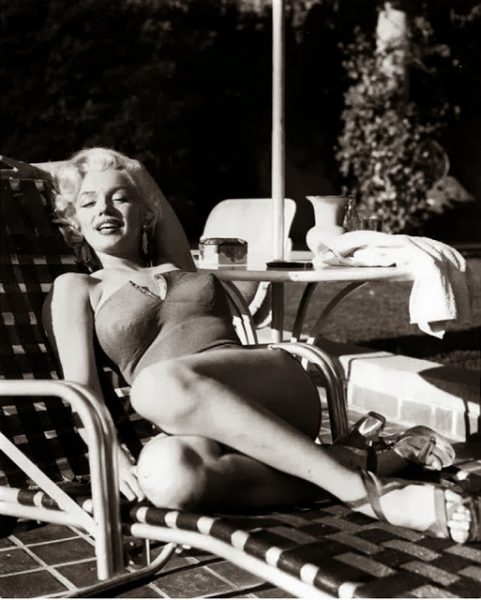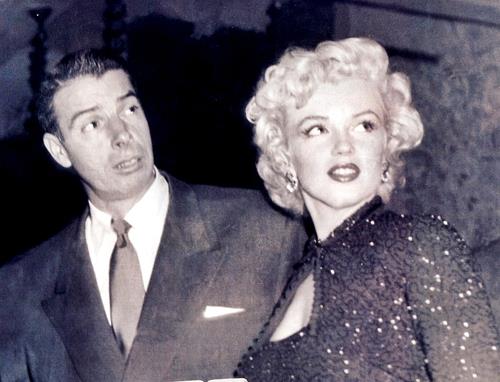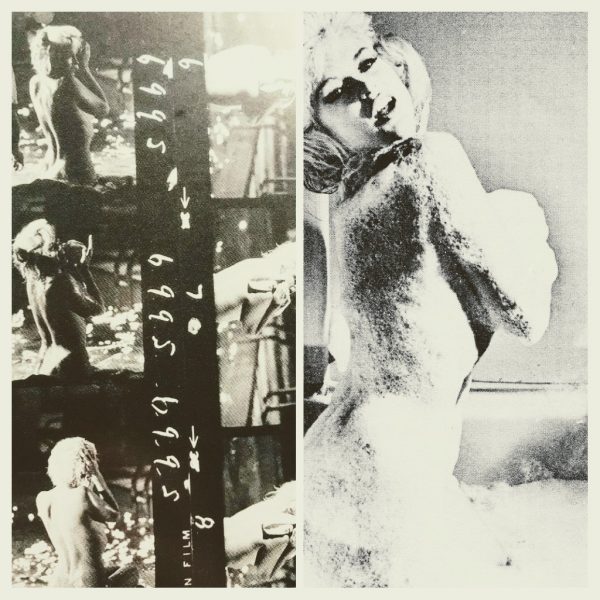
In 1962, Marilyn was set to become the first American actress to appear nude in a mainstream movie since Pre-Code days – but following her untimely death, that honour went to another blonde star, Jayne Mansfield, in a film released just a year later, produced independently with Tommy Noonan (who had played Marilyn’s love interest a decade earlier in Gentlemen Prefer Blondes.) And as with Marilyn’s shelved nude scene, Jayne’s big moment would make the cover of Playboy.
Although Jayne would reveal more than Marilyn did, both scenes showed the stars bathing (Marilyn in a pool, Jayne in a tub), and discovered by a shy, bespectacled man (Phil Silvers and Noonan respectively.) Kristin Hunt reports on the story behind a Hollywood watershed for Vulture – and if you’d like to learn more about Jayne, read Puffblicity, an illustrated biography by April VeVea, author of MM: A Day in the Life.
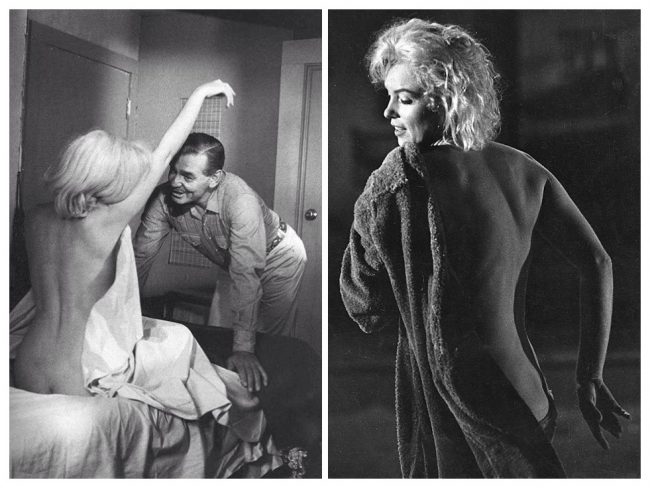
“Monroe filmed two nude scenes — one for 1961’s The Misfits and one for 1962’s Something’s Got to Give — but neither made it into theaters in one piece. The first scene was cut and the second was a mere fragment of an unfinished movie … The Something’s Got to Give scene was a little more intentional. Monroe’s character Ellen is supposed to swim nude, as a means to entice her estranged husband Nick from his hotel room. The footage of Monroe skinny-dipping in a pool is now available in multiple YouTube clips, but the movie never screened for era audiences, since Monroe was fired and then died before filming wrapped.
Either scene would’ve made Monroe the first American star to go nude in a Hollywood movie in decades. But in Monroe’s absence, it was Jayne Mansfield who shattered the long-standing tradition. Like Monroe, Mansfield was a buxom blonde with a complicated reputation — but unlike Monroe, she craved the industry’s constant spotlight, and frequently used her body to get it.
While onscreen nudity certainly existed before 1962, it had been outlawed in the U.S. for decades under the Production Code … It was against that backdrop that Mansfield made her topless debut in the 1963 swingers cruise-ship comedy Promises! Promises! The actress was in a bit of a career slump at the time … Mansfield had always been famous for her crass publicity stunts, which often involved her ‘accidentally’ losing her clothing … Those blatant headline grabs had launched Mansfield’s career, landing her a star-making role in the 1956 comedy The Girl Can’t Help It, and they also made her distinct from her blonde-bombshell rival Monroe, who generated tabloid fodder without really trying.
Shortly after Monroe’s 1962 death, The New York Times ran an article explaining why each ‘successor’ to Monroe was an inadequate replacement: Ava Gardner was too reclusive, Kim Novak too serious, Natalie Wood too slight. But the newspaper reserved some of its meanest comments for Mansfield. ‘Jayne Mansfield, whom 20th Century Fox was building as a Love Goddess nominee, suffers from too much publicity and too few roles,’ The New York Times wrote. ‘She has become rather a caricature — like Mae West — and alienates the segment which takes sex seriously.’
If she was already a caricature, it made sense for Mansfield to seek out the absurdity of a sexploitation film. Promises! Promises! was a translation of Edna Sheklow’s 1960 play The Plant, about two couples on a cruise ship who swap partners in a drunken haze, and then have to figure out who fathered which pregnancy. Actor Tommy Noonan purchased the film rights after nearly starring in the stage show, planning to write, direct, produce, and act in the movie.
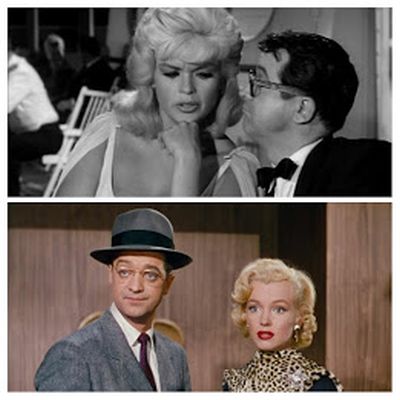
Noonan would’ve known as well as anyone the risks of including a nude scene, even within the context of this racy plot … But a code violation didn’t carry the weight it once did, because by 1963, the entire system of censorship was running on life support … Mansfield’s nude scene arrives fairly early into Promises! Promises!, soon after the couples have settled into their cabins. Her screen husband Jeff (Noonan) has just been to see the ship’s medic about his sperm. When he returns — in high spirits, after receiving a placebo from the doctor — he finds Sandy (Mansfield) stepping out of a bath, where she was just cooing the song I’m in Love under a blanket of bubbles. She appears in the doorway, patting down her torso with a towel that does nothing to obscure her chest. The shot lingers for a few seconds before she closes the bathroom door to dress.
As the crew filmed, a photographer for Playboy took extra shots to run in the magazine, pocketing them for the eventual publicity campaign. Despite Mansfield’s name, Promises! Promises! was a B-film to its core, shepherded by an actor-turned-auteur who was not quite a household name and who harbored no artistic pretensions. The movie entered markets without MPAA approval or studio backing, which meant it had to rely solely on advertising. You can guess what the publicity team focused on.

Playboy published its behind-the-scenes images in the June 1963 issue, promising ‘The Nudest Jayne Mansfield’ on the cover. Enterprising movie exhibitors were only too happy to join in the ogling … But in many cities, the exploitative advertising and lack of MPAA approval were a liability, with censorship boards in Maryland, Cleveland, Pittsburgh, and other markets attempting to keep the film out. When the Playboy issues hit newsstands, Hugh Hefner was arrested and hauled into Chicago court for ‘publishing and distributing an obscene magazine.’ The city based its complaint on two ‘particularly obscene’ images showing Mansfield lying naked on a bed with a fully clothed man. The case ended in a mistrial, letting Hefner off the hook.
Though Promises! Promises! made money, it was too crass and too indie to recoup Mansfield’s struggling stardom — and her career never bounced back to its 1950s heights. Critics savaged the film, with Variety calling it unsuitable for ‘anyone whose mentality surpasses that of a 5-year-old.’ But the topless scene did indicate where films were heading in respect to the policy against nudity. The following year in 1964, The Pawnbroker challenged the Production Code with a much more artistic — and much more upsetting — use of nudity through a Holocaust flashback sequence. The film had a celebrated director in Sidney Lumet and a serious method star in Rod Steiger, and due to this pedigree, it had more of a lasting impact than Promises! Promises! could, setting a precedent that would make it easier for movies to include nude scenes.”

